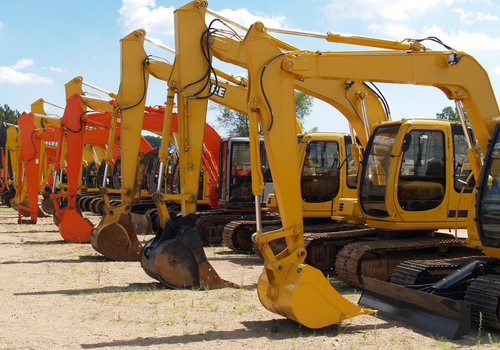Supply chain challenges continue to plague the construction equipment industry, and unfortunately for contractors and other equipment-intensive businesses, there is little relief in sight. A mid-year survey of construction equipment manufacturers and component suppliers conducted by the Association of Equipment Manufacturers (AEM) revealed that while delays due to international shipping and transportation issues have lessened, ongoing component and materials shortages continue to put strains on supply.
“All of our members are experiencing issues,” but things are somewhat better,” says Benjamin Duyck, Director of Market Intelligence at AEM. “Fifty-one percent of OEMs surveyed and 55% of component manufacturers felt that while they were still experiencing issues, things were getting better.”
“It doesn’t take a lot of time to turn down the supply, but it takes a huge amount of time to turn it back up,” says Bob Henderson, Executive Vice President of the Associated Equipment Distributors (AED).
According to Duyck, the average lead time for construction equipment is nearly three times what it was in 2019. “In 2022, dealers were taking orders for 2023, now they are pushing them out to 2024,” adds Henderson.
With limited alternatives, we asked how contractors for their best tips on overcoming supply chain challenges.
1. Start with a good forecast
“The biggest thing you need is a good forecast,” says Nick Grandy, Real Estate and Construction Senior Analyst with RSM US LLP, an audit, tax, and consulting firm. “You need to know what you are going to be doing in 3 to 6 months,” he says. With long lead times for equipment, the earlier you can communicate your equipment needs to your dealers, the more likely it will be that you will be able to acquire what you need.
2. Be honest and accurate in your communication
Both Henderson and Duyck caution contractors not to overorder to ensure supply. “Overordering just makes the situation worse,” says Duyck. “It hides real demand and makes it more difficult for manufacturers to forecast. Instead, focus on honest and accurate communications.”
3. Embrace telematics to keep machines up and running
Downtime is never a good option, but with contractors forced to hold on to machines longer, adhering to a strict maintenance routine is more important than ever. Henderson says contractors have increased their utilization of telematics to better track machine hours and monitor machine health. “There is much more collaboration with dealers today,” says Henderson. “It’s about working with the dealer to reduce the total cost of operation and improve efficiency.”
Increasing the number of parts in inventory can also help contractors avoid unnecessary downtime when machines need to be repaired.
4. Don’t put all your eggs in the dealer rental basket
Rental is one way to expand your fleet in the short term and contractors have relied heavily on rental since the last recession. However, many dealers have sold off machines in their rental fleet that won’t be replaced any time soon. Inventory is down and demand is strong. “We have seen that with low rental inventory, it’s harder to get what you need when you need it,” says Grandy.
“When you plan for upcoming work, don’t rely solely on flexing your fleet with rental machines,” advises Duyck.
5. Know everyone in the supply chain
It’s important to know where your equipment and parts are coming from—not just dealers and OEMs, but also component and material suppliers. You can’t build a supply chain resiliency by using different brands if they are all getting their components and materials from the same source. “You want to identify when you are in a position of vulnerability,” says Grandy.
Equally important is to keep an eye out for market disruptions that could negatively impact supply chains further, such as labor issues, conflicts, and material shortages.
6. Unload unused equipment
With used construction equipment being sold at a premium price, examine your equipment yard and identify those pieces of equipment that are underutilized. “If you don’t have a 60-75% utilization rate on the equipment, this might be a great time to liquidate the equipment,” says Grandy. According to EquipmentWatch, the fair market value for used construction machinery was up 6% through July.
A forecast for 2023 and beyond
Contractors can expect more of the same supply chain challenges in 2023. Grandy says inventory levels are down 15% while the impact of the $1 trillion infrastructure bill is expected to take hold in early 2023.
“In Spring of 2023 we still expect a huge backlog of contractors looking for heavy machinery,” says Grandy. “Heavy equipment supply issues are going to take through 2023 to resolve.”
Increased prices are a side-effect of limited supply. According to the US Bureau of Labor Statistics, construction equipment pricing rose 13.8% over the past 12 months. Prices for rental machines are also on the rise. According to EquipmentWatch, average construction equipment rental rates are up 8% from July 2021 through August 2022.
Based on survey responses from OEMs and component manufacturers, Duyck says most manufacturers don’t expect supply issues to resolve until late 2024.
Until then, equipment-intensive firms are going to have to tightly manage their business and their fleet to ensure they can have the equipment on hand to do the work.
Read Next
Inflation: What Does It Mean For The Construction Industry And How To Get Through It
A Good Succession Plan Will Help Protect Your Construction Business From Future Threats








